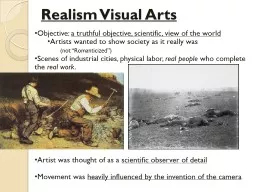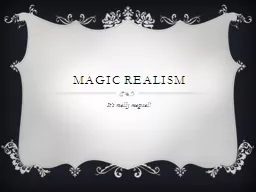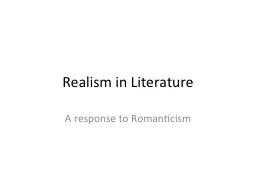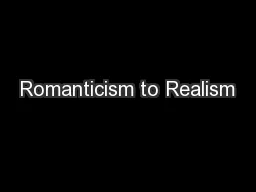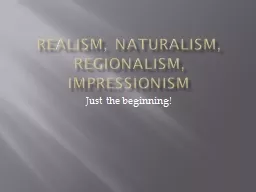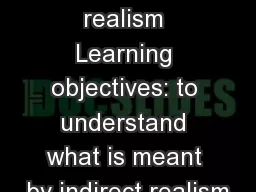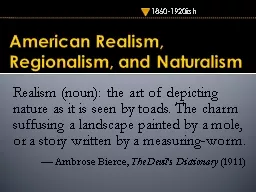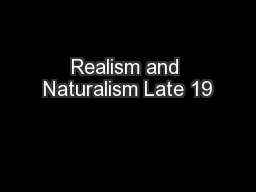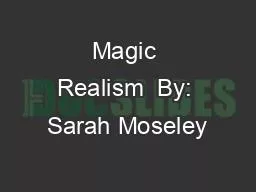PPT-Realism Visual Arts
Author : tawny-fly | Published Date : 2017-10-22
Objective a truthful objective scientific view of the world Artists wanted to show society as it really was not Romanticized Scenes of industrial cities physical
Presentation Embed Code
Download Presentation
Download Presentation The PPT/PDF document "Realism Visual Arts" is the property of its rightful owner. Permission is granted to download and print the materials on this website for personal, non-commercial use only, and to display it on your personal computer provided you do not modify the materials and that you retain all copyright notices contained in the materials. By downloading content from our website, you accept the terms of this agreement.
Realism Visual Arts: Transcript
Download Rules Of Document
"Realism Visual Arts"The content belongs to its owner. You may download and print it for personal use, without modification, and keep all copyright notices. By downloading, you agree to these terms.
Related Documents

